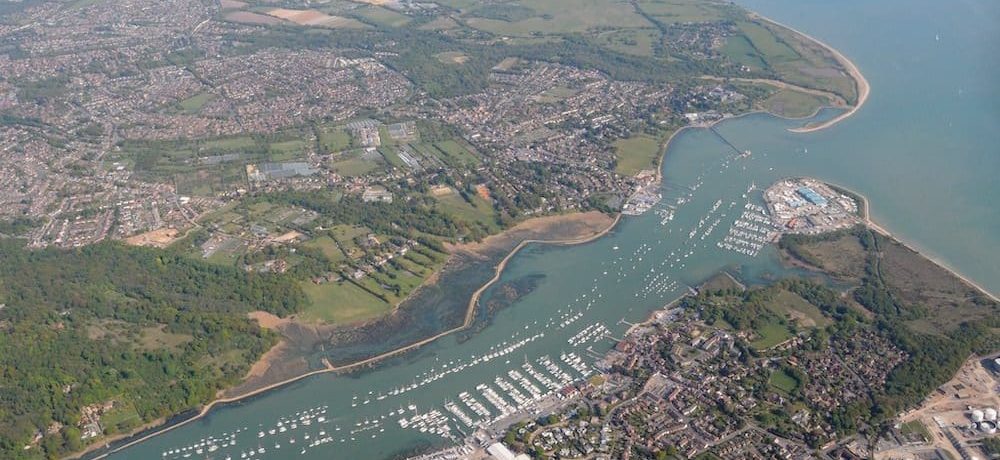Nitrate Neutrality – Nov 2019
Planning Consents Paralysis from new Nitrate Neutrality legal case
A recent ruling by the European Court of Justice (ECJ) has refined and redefined an aspect of the EU Habitats Directive. This refers to the impact on the quality of designated water bodies from discharges from certain projects and developments such that small individual dwellings/developments should now be considered within the ambit of this Directive if there is likely to be an adverse impact on the nutrient status of a designated European nature conservation site. Since the Solent waterway comprises a number of European (SAC, SPA etc) and International (Ramsar) legally protected conservation areas (e.g. Chichester & Langstone Harbours, Dorset coast), and much of which is already in a precarious, pre-eutrophic state, it follows that any increase in nutrient loadings draining into the Solent waters from any new developments in South Hampshire either directly (from sewage/WWTW outfalls) or indirectly (from farm drainage/runoff, sewage/silage systems, streams and rivers etc) which worsens its consented nutrient (N & P) status, is to be prevented.
Whilst the legality of this new, much stricter interpretation of the Habitats Directive by the recent ECJ court ruling (known as the Dutch Case-2), can be debated and even challenged, (especially after any Brexit), the current position adopted by the Government, LA’s, the Environment Agency (EA) and Natural England (NE), is that this ruling should be followed, although there is some disagreement between NE’s ‘precautionary’ approach and the EA’s more pragmatic ‘risk-based’ approach to a solution.
The upshot of this new ruling means that almost any new development in S. Hants is now required to show nitrate-neutrality (Nn) before it can be occupied. This ECJ bombshell has effectively led to a moratorium on all new developments in S. Hants since the summer, with some even dismissing appeals for single dwellings if the schemes cannot be shown to be Nn. Meanwhile, LPA’s have been desperately trying to find ways to circumvent, mitigate or adapt to this new ruling.
This is an extremely complex issue both legally, environmentally and technically, and there are certainly no quick and/or simple solutions. Natural England (NE) recently (June 2019) published an ‘Advice Note’ for local LPA’s on ‘Achieving nitrate neutrality for new developments in the Solent region’, which runs to some 30 pages of detailed technical notes, calculations and suggested options for achieving Nn.
Similarly, the Partnership for South Hampshire (PfSH) Water Quality Working Group (WQWG), have released 2 very useful and informative documents regarding Nn, in July and October 2019, authored by David Bibby – a PPO for Test Valley BC.
Whilst this issue is really a strategic/national governmental problem, a building backlog of planning consents for much needed housing developments in S.Hants cannot wait for any high-level deliberations to achieve any unified solution. Action to break this planning logjam is needed now, such that individual LPA’s are proposing their own, immediate/short-term solutions.
Some Councils, like Havant BC and New Forest DC, have issued comprehensive ‘Position Statements’ on Nn development which essentially follow the NE’s conservative advice and contain costed measures for various avoidance, treatment and mitigation schemes, (£500/house) whilst Portsmouth CC has proposed an interesting ‘nitrate-banking’ scheme whereby vacant Council buildings (of which there are shamefully too many), can be assigned nitrate-credits, which can then be assigned to new dwellings, thereby approximating Nn overall. Additional proposed measures include implementing water efficiency/savings/reduction techniques in all its current houses, to equate with efficient water use in its proposed new housing developments, so that the total discharge to sewer remains roughly constant.
There are potentially several ways in which nitrates can be reduced in discharge drainage (eg SUDS, reed beds, wetlands etc), but the only really significant way is to implement nitrate-reduction techniques at either private, on-site, estate-scale (50-100+ houses) developments, or via improvements/additions to denitrification processes at or alongside current Southern Water WWTP’s, with costs potentially coming via a levy on all new developments.
Whilst we all await further news and progress to unlock this planning paralysis, a related issue has just cropped up in the new UK Environment Bill (published on 14th October), which is proposing that all new developments should show a net biodiversity gain. Whilst this may be welcomed by all concerned with our environment, I suspect this may prove quite challenging for LPA’s to have to implement in the future!
Dr Nick Walton







